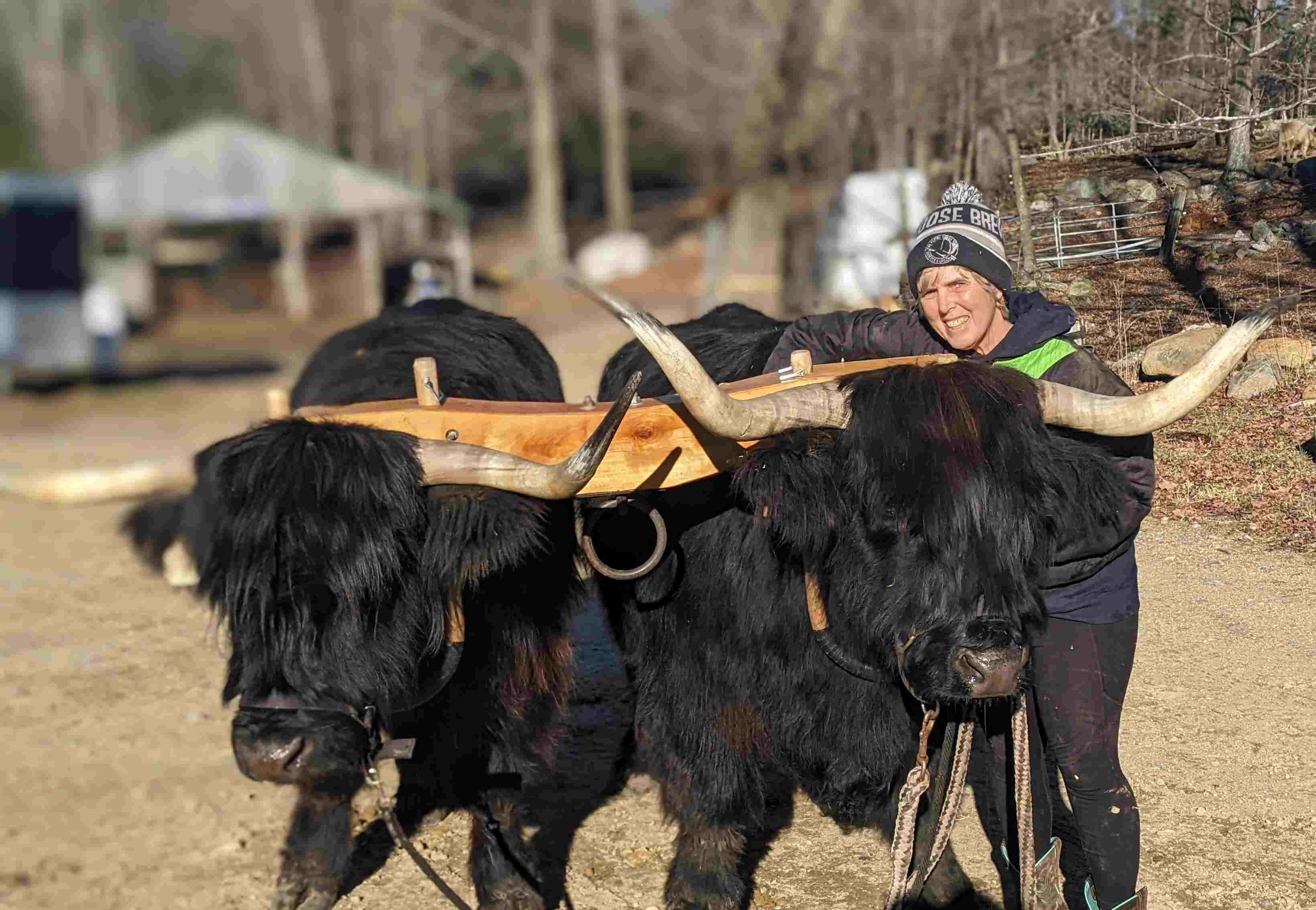The Perfect Job for a Lazy Ox
posted on
December 21, 2020

Stash, an eight-year-old Scottish Highlander ox, in his Rudolph the Red-Nosed Rein-Steer nose while Highlander Curious Bleu hangs out behind.
Working oxen is my special joy. My pair of 8-year-old Scottish Highlander oxen have accepted me as their leader. We work as a team hauling logs; they do the hard work, I give the commands. When given the command, "Walk on," Topper and Stash lean into the yoke, walking step-for-step in unison to get the job done. And they have fun, too. Once in a while, when pulling a load, Topper will nudge me with his horns as if to say, "Can't we go faster, lady?"
What is an Ox?
What are oxen? "Ox" is a job description, not a breed. Any bovine of either sex or any breed can be trained to be an ox. An ox's job is to work in a yoke (alone or with a partner) to pull things, like a plow, a log, or a "sled" piled with rocks.
There's something about harnessing and commanding the might of 3,000 pounds of muscle and bone that is gratifying. It makes imposing my will upon my 160-pound husband hardly worth the effort. (Just joking, Bruce; I'll always make the effort.) Admittedly, mechanization has generally replaced oxen, but oxen can do anything a tractor can do – it just takes them longer. But (to paraphrase the great Roger Miller), what's time to an ox? Tractors have replaced oxen, but a tractor will never make me laugh or look to me for approval for a job well done.
Stash, The Lazy Ox
At this time of year, one ox named Stash has yet another job: performing as Rudolph the Red-Nosed Rein-Steer. Happily, for him, it doesn't take a lot of work. Mostly Stash will stand next to Santa's sleigh with a red nose attached to his halter. A typical steer would be accustomed to deciding when to walk away and when to swing his head. Thank goodness that Stash is not only obedient but lazy. When he performed this job last year, he hardly moved a hoof.



